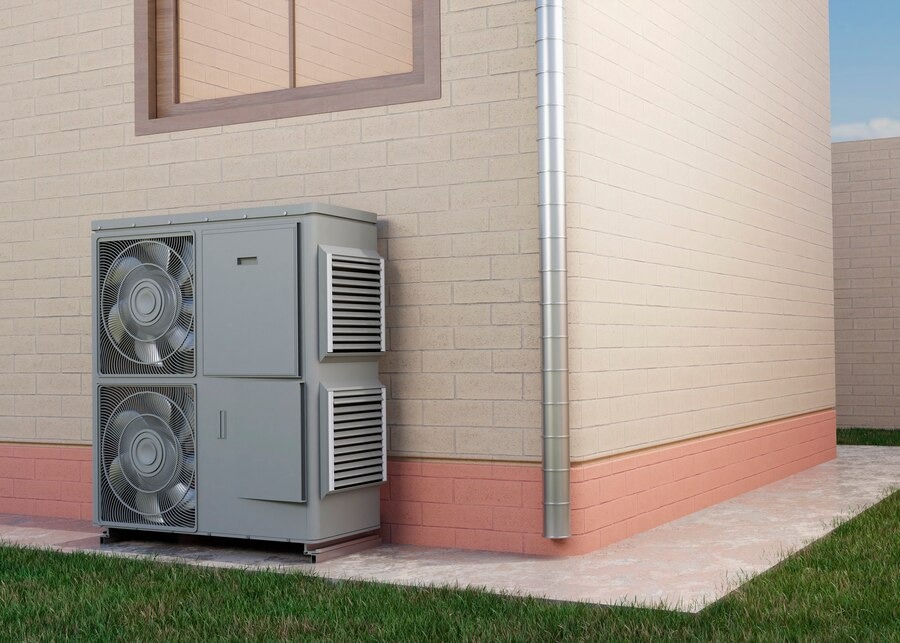How to Get a Heat Pump Installed?
Installing a heat pump in your home is an excellent way to improve energy efficiency and provide reliable heating and cooling all year round. Whether you’re building a new home, upgrading an old system, or replacing a malfunctioning heater or air conditioner, heat pump installation offers numerous benefits. In this guide, we will walk you through the process of installing a heat pump in your home, from the planning stages to the final setup. Let’s explore what goes into a successful installation, how to prepare, and what to expect from professionals.
What Is a Heat Pump?
Before diving into the installation process, it’s essential to understand what a heat pump does. A heat pump is an energy-efficient system that can provide both heating and cooling by transferring heat between your home and the outside air. In the winter, it absorbs heat from the outside and brings it indoors, while in the summer, it works in reverse, removing heat from inside your home. Heat pumps are highly efficient, making them a great choice for homeowners looking to save on energy bills while keeping their home comfortable year-round.
Benefits of Heat Pump Installation
Heat pump installation can provide numerous benefits for homeowners. Here are just a few reasons why many people opt for a heat pump system:
- Energy Efficiency
Heat pumps use less energy than traditional heating and cooling systems because they don’t generate heat; instead, they transfer it. This efficiency can lead to lower energy bills, especially during peak heating and cooling seasons. - Dual Heating and Cooling
A heat pump provides both heating and cooling capabilities, making it a versatile solution for homes in climates with hot summers and mild winters. - Environmentally Friendly
Since heat pumps rely on transferring heat rather than generating it, they produce fewer emissions than traditional heating systems, making them more eco-friendly. - Long-Term Savings
Though the upfront cost may be higher than traditional systems, heat pumps save money in the long run by reducing energy consumption and maintenance costs.
Steps for a Successful Heat Pump Installation
Heat pump installation is a detailed process that requires expertise and careful planning. Here’s a breakdown of the typical installation steps:
1. Consult with a Professional HVAC Contractor
The first step in getting a heat pump installed is to consult with a licensed HVAC (heating, ventilation, and air conditioning) contractor. It’s important to hire professionals who have experience with heat pump systems. They can guide you through the process, help you choose the right unit for your home, and ensure that the installation meets local codes and regulations.
During the consultation, the contractor will assess the size of your home, your heating and cooling needs, and the best location for the heat pump. They will also take a look at your current HVAC system (if applicable) to determine if it needs to be upgraded to accommodate the new heat pump.
2. Choosing the Right Heat Pump
Choosing the right heat pump is critical to the success of the installation. Heat pumps come in different types, and your contractor will help you select one based on your home’s needs. Some common types of heat pumps include:
- Air-Source Heat Pumps
These are the most common type and transfer heat between your home and the outside air. - Ground-Source (Geothermal) Heat Pumps
These systems transfer heat between your home and the ground, offering increased efficiency, but they require more extensive installation work. - Ductless Mini-Split Heat Pumps
These are ideal for homes without ductwork and are typically installed in individual rooms or zones.
Your HVAC professional will guide you through these options and help you select a system that suits your needs and budget.
3. Preparing for Installation
Once you’ve chosen the right heat pump, it’s time to prepare for installation. The preparation process includes:
- Site Inspection: The technician will inspect your home to determine the best location for the indoor and outdoor units. The placement is critical for ensuring optimal efficiency and airflow.
- Assessing Electrical Needs: Heat pumps require specific electrical wiring, and your technician will ensure your electrical system can handle the load. If necessary, they will upgrade your electrical panel to meet the requirements.
- Ductwork Inspection (if applicable): If you are installing an air-source heat pump with existing ductwork, your technician will inspect and possibly upgrade the ducts to ensure they are properly sealed and in good condition. If you’re installing a ductless system, this step won’t be needed.
4. The Installation Process
The actual installation of a heat pump typically takes one or two days, depending on the complexity of the system and your home’s setup. Here’s a general idea of what to expect during installation:
- Indoor Unit Installation: The technician will install the indoor unit in a location that allows for proper airflow and optimal comfort. If you’re installing a ductless system, the technician will mount the air handlers on the wall of each room or zone.
- Outdoor Unit Installation: The outdoor unit will be placed in a location that allows for proper ventilation and airflow. It should be placed in a spot where it is protected from extreme weather conditions and debris.
- Electrical Hookup: The technician will wire the heat pump system into your home’s electrical system and ensure everything is safely connected and up to code.
- Ductwork and Piping: If you are installing a system with ducts, the technician will connect the ductwork to the indoor unit. If you’re installing a ductless heat pump, refrigerant lines and electrical wiring will be installed to connect the indoor and outdoor units.
- System Testing: Once everything is connected, the technician will test the heat pump system to ensure it’s working correctly. This includes checking the airflow, refrigerant levels, and system operation.
5. Post-Installation Inspection and Final Setup
After the installation, the technician will conduct a final inspection of your heat pump system. They will:
- Ensure the system is running at peak efficiency.
- Set the thermostat and make sure it’s calibrated correctly.
- Check for any potential issues with the airflow or noise levels.
- Provide you with instructions on how to operate and maintain your new heat pump.
Additionally, the technician may offer advice on how to improve energy efficiency and maintain your heat pump, such as regular filter changes, cleaning the outdoor unit, and scheduling annual maintenance.
6. Enjoy the Comfort and Savings
Once your heat pump installation is complete, you can start enjoying the benefits of a more energy-efficient, comfortable home. With proper care and regular maintenance, your heat pump can provide reliable heating and cooling for many years to come.
Tips for Maintaining Your Heat Pump
To get the most out of your heat pump, it’s important to perform regular maintenance. Here are some tips to help keep your system running efficiently:
- Change the Air Filter Regularly: A clogged air filter can reduce airflow and decrease efficiency. Be sure to change your filters every 1-3 months.
- Clean the Outdoor Unit: Keep the area around the outdoor unit clear of debris like leaves and dirt. Clean the coils and fins to maintain airflow.
- Schedule Annual Maintenance: Have your heat pump serviced by a professional HVAC technician once a year to ensure everything is running smoothly.
- Check the Thermostat: Ensure that your thermostat is working properly and set to the appropriate temperature for your comfort.
Conclusion
Getting a heat pump installed is a great investment for your home, providing efficient heating and cooling while lowering energy costs. By following the steps outlined in this guide, you can ensure a smooth installation process. Always consult with a professional HVAC contractor to help you choose the right system, handle the installation, and maintain it properly. With the right care, your heat pump will provide comfort and savings for years to come.



